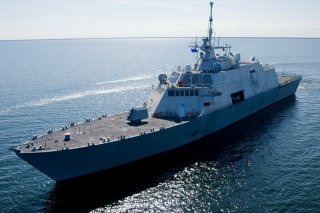Does America's Navy Need a Revolution in Ship Design?
Ship types have displaced one another other from the cores of fleets across the decades and centuries. Maybe it’s time to unseat the ship itself.
Customizing a fleet for likely battle settings constitutes the challenge before U.S. maritime strategists and the warriors who will prosecute strategy. Breaking the mold might mean demoting the ship from its central place in sea power. It certainly demands a supple way of thinking about warlike encounters at different places and times, and against different antagonists. The right fleet inventory might include 280 ships or even fewer, or it might include 355 or far more.
It depends. There’s no substitute for exercising imagination in an effort to foresee what prospective adversaries want at different places, how much they want it, how many and what forces they might deploy to get it, and how they might wield those forces in times of strife. These—not arbitrary ship counts—are the metrics against which American sea power will be judged. Only through such acts of foresight can U.S. naval commanders and their political masters determine the composition of the future fleet as well as the best ways to handle the fleet in action.
TR and Clausewitz would tell wise radicals and wise conservatives to hop to it.
James Holmes is J. C. Wylie Chair of Maritime Strategy at the Naval War College and coauthor of Red Star over the Pacific. The views voiced here are his alone.
This piece first appeared earlier and is being reprinted due to reader interest.
Image: Reuters.

